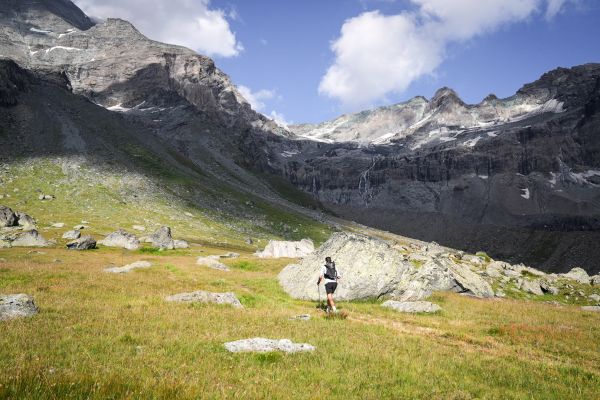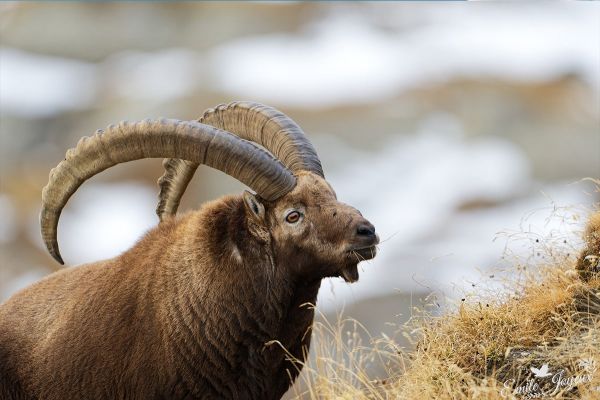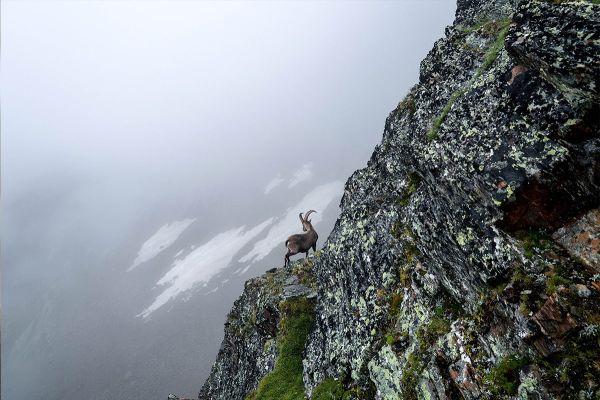Biodiversity
“If we spent more time in nature and less in the city, we would feel more connected to nature, to other animals, and we would feel for them.”




Biodiversity in the Alps

The Alps is home to over 30,000 animal and 13,000 plant species, many of which are uniquely adapted to the diverse habitats found at varying altitudes and climates. The high levels of biodiversity in the Alps play a crucial role in maintaining the health and stability of the ecosystem. However, this rich natural heritage faces significant threats from climate change and human activities. The retreat of glaciers and thawing of permafrost are not only altering the landscape but also disrupting habitats, putting species at risk. Conservation efforts are essential to protect this biodiversity and ensure the resilience of the alpine environment.

Forests and CO2 — Alpine forests are invaluable for their diverse ecosystem services, including carbon sequestration, water provision, and protection against natural hazards such as rockfalls and avalanches. These forests act as significant carbon sinks, absorbing approximately 30% of human CO2 emissions, which helps mitigate the effects of climate change. Additionally, forests provide resources like timber and support biodiversity, serving as habitats for various species.
Fauna in the Alps, Overcrowding, and Endangered Species — The fauna of the Alps is incredibly diverse, encompassing a wide range of mammals, birds, insects, and other wildlife adapted to the alpine environment. This diversity is vital for maintaining ecosystem balance and health. However, the increasing number of people engaging in outdoor activities in the Alps has led to overcrowding, which can disrupt wildlife and degrade habitats. About 40% of birds and 15% of mammals studied by researchers in the Alps are somehow vulnerable to disappearance. Endangered species in the Alps include the eurasian lynx, the european polecat, the eurasian harvest mouse, southwestern water vole, Bonelli’s eagle, black-tailed godwit or the rock ptarmigan. In Switzerland, more than 700 plant species are considered to be threatened. Researchers have shown that overall 27% of these populations had gone locally extinct within the last 10–60 years.

Changes in Plant and Animal Behavior — Climate change has significantly altered the behavior of plants and animals in the Alps. Over the past 40 years, the timing of spring events has been occurring earlier. For example, the leaf-out and flowering times for woody and herbaceous plants are advancing by about 2-3 days per decade. Similarly, reptiles and land insects, such as butterflies, are becoming active about 5-6 days earlier each decade. Plants, animals, and fungi are migrating to higher elevations to stay within their preferred temperature zones. However, the resources they depend on, such as specific plants and prey, are not migrating as quickly. This leads to a shortage of necessary resources and increases the risk of disappearance for these species.

Uplifting Human Impact on Biodiversity Conservation
Explore inspiring initiatives that are making a significant impact in biodiversity conservation. These projects highlight the creativity and dedication of individuals and communities working together to build a sustainable future in the Alps.
Based in Chamonix, Jérémie Villet is a renowned photographer dedicated to capturing the essence of biodiversity. He often embarks on solitary and remote journeys with his camera, where he uses snow to show the beauty of nature. Jérémie’s photographs have received numerous awards, including Wildlife Photographer of the Year and European Photographer of the Year.

According to Jérémie, it is easier to discuss climate challenges by first speaking about the surrounding biodiversity. “By showing the beauty of animals and their habitats, I hope to make people feel more empathy, and urgency to protect these species.” Jérémie says. In Chamonix, Jérémie developed a project focused on raising awareness about the animals that often go unnoticed by people, like the Rock partridge (Lagopède alpin). In thirty years, these birds may vanish entirely, forced higher up the mountains where food sources are scarce. His goal is to highlight the presence of these animals to visitors who come to the mountains for recreational activities.
What if we would spend five minutes in nature, slowing down, and observing the life around us? Whether you are running through the trails or simply walking, take a moment to sit and watch. What do you see? We don’t need to go far to spot the birds, the small mammals, or the delicate flora that make up our ecosystem. Jérémie’s call to action is clear: by connecting more deeply with nature, we can cultivate empathy and a genuine desire to protect it.
“When we understand that we are not separate from nature but an integral part of it, our sense of responsibility towards the environment naturally strengthens.”
Get inspired by
Nature restoration program (EU)

The Nature Restoration Law, adopted by the European Parliament in February 2024, aims to restore and enhance natural habitats across the EU to combat biodiversity loss. This law mandates all EU countries to develop and implement national restoration plans, targeting specific environmental issues. The key goals of the program include restoring degraded ecosystems, enhancing biodiversity, and improving the resilience of natural habitats to climate change. By focusing on these objectives, the EU seeks to preserve its rich natural heritage and ensure the long-term health of its ecosystems.
Project SoPheno (CREA Mont-Blanc)

Green trail Concept Project (KJF)

Restore the trails (KJF)

ALPALGA (KJF)
